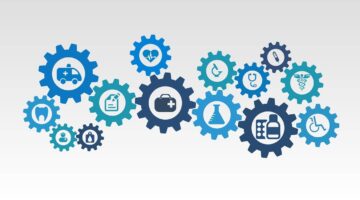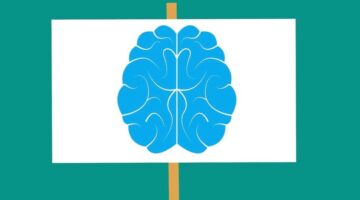
There are undeniable, extraordinary benefits to living in a world that’s more connected than ever before. In medicine and healthcare alone, there is a near-limitless opportunity.
But as connectivity brings us closer together, it’s also generating a sea of information that will soon exceed human comprehension. That means more important insights will be lost in endless exabytes of inaccessible (dark) data — unless we tag in some sophisticated artificial intelligence.
How did we get here?
In recent years, microprocessors have become faster, cheaper, and smaller. We can now put a computer almost anywhere, connecting almost any device. The Internet of Things (IoT) is linking everything from cars to coffee makers, making life more convenient and giving us useful insights. But it’s also producing a ton of data that we don’t know how to use.
The use of IoT and smart devices are proliferating in nearly every industry. Business Insider forecasts the number of internet-connected devices to reach 34 billion by 2020, with approximately 70% being IoT devices, about 5 times the number of people on the planet. Farmers are using sensors in their fields to monitor resources and in their tractors to get data on crop yields; electrical companies have turned to electronic devices, like the smart meter, to measure and communicate energy usage between suppliers and customers; and Amazon is changing the way we shop for groceries by using sensors and AI to eliminate checkout lines.
As the IoT gains wider adoption, the technology is reaching full maturity. Smart devices are becoming significantly more reliable, more accurate, and more useful – and that’s having a huge impact on the healthcare industry. For example, recent studies have shown that the Apple Watch can be used to detect heart arrhythmias with 97% accuracy. Hexoskin, a company specializing in wearable sensors, is outfitting Canadian astronauts and everyday consumers alike with compression shirts capable of measuring heart rate, activity levels, and sleeping patterns. These breakthroughs illustrate just how effective smart devices are becoming. However, with fast-paced technology growth comes vast amounts of inherited data that we have not yet learned how to fully utilize.
Case in point, only 10% of collected data is analyzed and put to use. The resulting 90% of untouched information is known as “dark data,” or data that companies have recorded but failed to incorporate into their initiatives. According to SiliconANGLE, 60% of the data we do not utilize can lose its value in milliseconds if companies can’t find an initial purpose for it.
Healthcare for humans, courtesy of AI
Dark data is essentially an untapped resource for healthcare organizations worldwide. Without tools or strategies to utilize that data, healthcare companies are missing out on significant opportunities to improve care. According to research from EMC2 and IDC, healthcare data is growing at an annual rate of 48 percent, making it one of the fastest growing data segments in the world. The report estimates healthcare data to reach 2,314 exabytes by 2020. For some perspective, one exabyte equals 1 billion gigabytes, or to think of it another way, we could store about 500 billion volumes of War and Peace in a single exabyte. Think about the value and insight behind these numbers, if we could just harness the full potential of that data to improve the health of humanity over all.
But pulling useful insights from a pool of unstructured data is no simple task for humans alone. It would take teams of data scientists months, or even years, to tease out useful insights from the data, which makes the endeavor cost-prohibitive for most organizations. To get the job done right, it is critical to have the right technology.
Experts have long said that artificial intelligence (AI) is the key to mining this data. Algorithms can recognize patterns and deliver insights that the human mind could not identify on its own, all in an instant. But automating data analysis comes with its own set of challenges.
Technology is advancing at a breakneck pace, with new devices and new sensors continually arriving and rendering older technology obsolete. AI needs to account for changes to technology inputs in real time if healthcare isn’t to be left behind. But many of today’s AI algorithms are static; they must be reprogrammed at every instance of alteration. They cannot adapt to new sensors, new users, and new data streams. If we are to really tap into all of the unused, unstructured data that’s available, we need a new evolution of AI that can adapt to a rapidly changing world.
In healthcare, the vast amount of data that IoT and wearable technology produce is an invaluable resource for unlocking deeper insights into the human body, personalizing care, diagnosing disease more accurately, and prescribing more effective treatments. But healthcare providers aren’t data scientists. In fact, data scientists alone aren’t even equipped to handle the deluge of data. We need a step change in the quality of our tools to achieve the promise of big data and bring deeper analytic value to physician diagnosis and care.
Through AI, healthcare organizations can develop a wide range of healthcare applications that take full advantage of the IoT-powered dark data at our disposal. And with that, we can unlock a new era of understanding of our health.
Photo: Aspire Ventures
Mike Monteiro is Aspire Ventures’ Chief Product Officer, serving as a lead resource for developing new products across the Aspire Ventures portfolio. In this role, Mike contributes distinctive experience in machine learning, big data, and predictive analytics for Aspire's portfolio companies. Prior to his role at Apsire, Mike was co-founder and CEO at Wylei, an AI-powered digital marketing company in Aspire's portfolio. Before that, Mike was a product executive at APT, the global leader in cloud-based predictive analytics. A graduate of Harvard with an MBA from Stanford Graduate School of Business, Mike continues to drive research and development of new analytic techniques for data mining and machine learning.
This post appears through the MedCity Influencers program. Anyone can publish their perspective on business and innovation in healthcare on MedCity News through MedCity Influencers. Click here to find out how.










